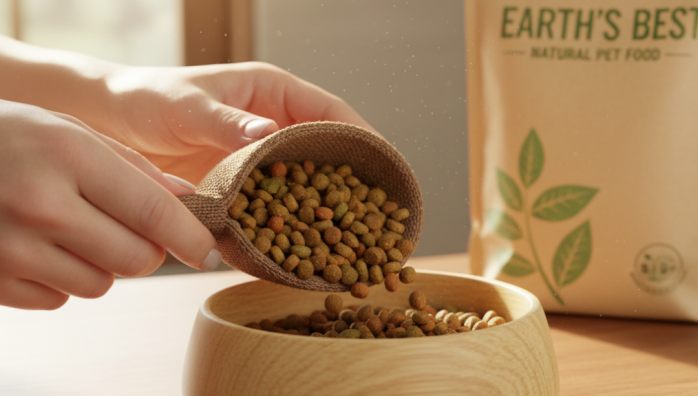Choosing Sustainable Pet Food and Products
by admin in Pet Care Basics 18 - Last Update November 16, 2025

When I first adopted my rescue dog, Leo, my world revolved around his happiness and health. I bought him the best food I could find, a mountain of toys, and all the gear. It wasn\'t until I was taking out the trash one week that I had a startling realization: the pile of empty plastic food bags, broken plastic toys, and non-recyclable containers was enormous. I was so focused on Leo\'s well-being that I\'d completely overlooked his environmental \'pawprint\'. That\'s when I started my journey into sustainable pet parenting, and honestly, it felt overwhelming at first. But I\'ve learned that it\'s all about making small, intentional choices that add up over time.
What I now look for in sustainable pet food
The food bowl is where I decided to start, as it\'s our biggest recurring purchase. Sifting through marketing jargon was tough, but I\'ve developed a personal checklist that really helps me cut through the noise.
Sourcing of ingredients
For me, this is the most important factor. I look for brands that are transparent about where their ingredients come from. I prioritize food made with ethically raised proteins, like free-range chicken or sustainably farmed fish (look for certifications like MSC). I also try to find brands that source ingredients locally or regionally to reduce food miles. It took some digging, but finding a company that shares these values made me feel so much more confident in what I was feeding Leo. Remember, a diet change should be gradual, and as always, it’s a great idea to chat with your vet about your pet\'s specific nutritional needs before making a switch.
Packaging matters more than you think
This was my original wake-up call. I now actively avoid brands that use multi-material, non-recyclable bags. My first choice is always large paper bags that can be recycled. Some smaller, forward-thinking companies even offer programs to return and refill bags or use packaging made from compostable materials. Buying the largest bag I can store properly also significantly cuts down on packaging waste over the year.
Beyond the food bowl: eco-friendly toys and supplies
Once I had the food figured out, I turned my attention to everything else. It turns out, there are fantastic sustainable alternatives for almost every pet product you can imagine.
My criteria for toys
I stopped buying flimsy plastic toys that Leo would destroy in minutes. It was a false economy and just created more trash. Now, I invest in durability. I look for toys made from natural, renewable materials like natural rubber, hemp, or wool. Not only do they last longer, but I also have more peace of mind knowing he\'s not chewing on potentially harmful chemicals. We\'ve found that a few high-quality, engaging toys are worth so much more than a basket full of broken plastic ones.
The scoop on poop
This is a daily task, so making a sustainable switch here has a big impact. I moved from standard plastic poop bags to ones certified as compostable. It\'s important to check the certifications (like BPI or TÜV Austria in Europe) to ensure they actually break down. It’s a simple swap that makes me feel a little better on every single walk.
Grooming and cleaning
My final frontier was the cleaning cabinet. I\'ve switched to pet shampoos that come in bar form to eliminate plastic bottles, and I use refillable, plant-based cleaners for messes around the house. They work just as well, are better for the planet, and are safer for Leo to be around.
Becoming a sustainable pet parent isn\'t about being perfect. It\'s a journey of learning and making better choices where we can. Every small change, from the food we buy to the toys we choose, contributes to a healthier planet for us and our beloved animal companions.









